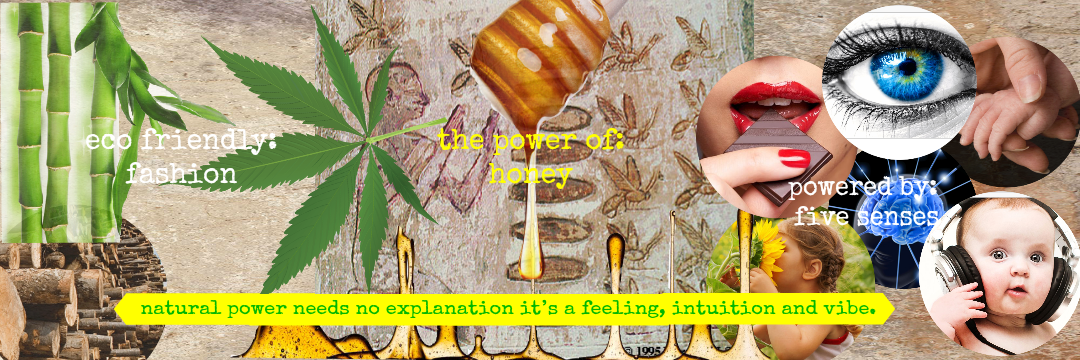
eco- friendly: fashion
Eco-friendly, cotton alternative “fabrics are making its way into the mainstream to help combat the impact fast fashion is having on the environment. The fashion industry has become the second most polluting industry in the world, just behind oil. But there is hope, in companies using things like pulp from eucalyptus tree, worn by celebrities like Kendal Jenner.” Bamboo fabric is said to be comfortable and less costly to produce than cotton. Hemp textile has a superior durability, extremely versatile and have countless product options. These cotton alternatives are eco-friendly and they don’t require pesticides, synthetic fertilizers, or GMO to be produced, which could help make soil healthier and stop erosion.
the power of: honey
honey: throughout ancient times honey has been known for its sweet and sticky essence. It is said to be sacred to Aphrodite, the goddess of love, beauty and wisdom. It can also protect against allergies if sourced locally and has antibacterial properties.
bees: in Ancient Egypt bees were symbols of death, rebirth and the soul.
honeycomb: hexagonal shape of a typical honeycomb relates to the Number 6, a number sacred to Aphrodite (Venus).
beekeepers: “bees were considered sacred in Egyptian culture because it was a gift from their God Re or Ra. They used it for embalming, in their cuisine and as medicine.”
“The god Re wept, and the tears from his eyes fell on the ground and turned into a bee. The bee made his honeycomb and busied himself with the flowers of every plant and so wax was made and also honey out of the tears of Re.” – Tears of Re
powered by: 5 senses
Our Senses are Windows in our sphere of Ignorance
Now the five windows of our senses give us hardly less imperfect knowledge of the wider world that is presented to us. Each of them is very limited in its range. The sense of sight covers but a small portion of the infinite gamut of vibrations of which visible light forms a part, the sense of hearing extends over a very small part of another range of vibrations to which sound is due, while the senses of touch, taste and smell although more closely connected than those of sight and hearing, are in themselves no less narrowly limited.
If the windows of our senses were more widely opened they would finally blend together, thus giving us a complete view of the universe in all its relations. We can see how limited our sense of sight is when we consider that there are animals which see rays of light that are entirely invisible to our eyes.
Our aim must be to open other windows of Sense.
All the efforts of science hitherto have been directed to the bringing together and comparing of the impressions made by our five limited senses. In this way we arrive at more or less conclusions concerning things that are not directly appreciable by the senses. But this is a very indirect and imperfect road to knowledge. The final result of all our progress ought to be, and doubtless will be to open to other windows or widen those already existing, so that eventually the universe will be directly known to us with clearness and completeness of which at present we can form no conception.
–Mysteries of Science and Nature- Our Five Senses, by Garrett P. Serviss (September 15, 1913)
1913Sept15FiveSense




